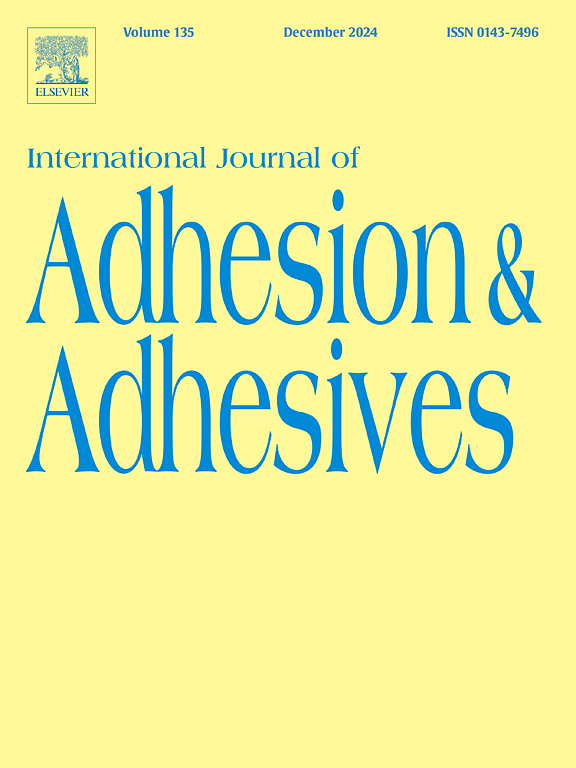Nanostructuring of steel/steel adhesive joint surfaces improves bonding performance
IF 3.5
3区 材料科学
Q2 ENGINEERING, CHEMICAL
International Journal of Adhesion and Adhesives
Pub Date : 2025-07-22
DOI:10.1016/j.ijadhadh.2025.104107
引用次数: 0
Abstract
In order to solve the problem of insufficient adhesive strength at the interface of steel adhesive joints, this paper proposes a method of nanostructuring the surface of mild steel based on the composite modification of KH560 silane coupling agent and CNTs, which is aimed at significantly improving the interfacial properties of metal adhesive joints. The changes in the chemical composition and microstructure of the modified layer were systematically analyzed by various characterization means such as XPS, SEM and AFM. It was found that KH560 formed a uniform film on the steel surface through chemical bonding, while CNTs constructed a micro/nano-network structure on the steel surface, which dramatically increased the roughness of the surface, and this network structure could enhance the mechanical locking effect of the interface. Mechanical test results showed that the modified joints exhibited significant enhancement in mechanical properties, including a 71.84 % increase in shear strength compared with the original specimens, and a 62.61 % increase in peel strength of the T-type adhesive joints. In addition, the failure mode of the fracture surface of the joint changed from interfacial failure to cohesive failure, indicating that the modification treatment significantly enhanced the adhesive strength and toughness of the interface.
钢/钢胶粘接表面的纳米结构提高了粘接性能
为了解决钢材粘接接头界面粘接强度不足的问题,本文提出了一种基于KH560硅烷偶联剂与碳纳米管复合改性的低碳钢表面纳米化方法,旨在显著改善金属粘接接头的界面性能。采用XPS、SEM、AFM等表征手段系统分析了改性层的化学成分和微观结构的变化。研究发现,KH560通过化学键合在钢表面形成均匀的薄膜,而CNTs则在钢表面形成微/纳米网状结构,大大增加了表面的粗糙度,这种网状结构可以增强界面的机械锁紧效果。力学试验结果表明,修改后的接头力学性能得到了显著提高,其中t型接头的抗剪强度比原试件提高了71.84%,剥离强度提高了62.61%。此外,接头断口的破坏模式由界面破坏转变为内聚破坏,说明改性处理显著提高了界面的粘接强度和韧性。
本文章由计算机程序翻译,如有差异,请以英文原文为准。
求助全文
约1分钟内获得全文
求助全文
来源期刊

International Journal of Adhesion and Adhesives
工程技术-材料科学:综合
CiteScore
6.90
自引率
8.80%
发文量
200
审稿时长
8.3 months
期刊介绍:
The International Journal of Adhesion and Adhesives draws together the many aspects of the science and technology of adhesive materials, from fundamental research and development work to industrial applications. Subject areas covered include: interfacial interactions, surface chemistry, methods of testing, accumulation of test data on physical and mechanical properties, environmental effects, new adhesive materials, sealants, design of bonded joints, and manufacturing technology.
 求助内容:
求助内容: 应助结果提醒方式:
应助结果提醒方式:


